-
Out of stock
 Growing on an upright bush, bright yellow, stringless pods of 10-15 cm are easy to spot among green foliage. Delicious buttery flavour. When planted in full sun they are prolific producers reaching a height of 37-50 cm tall and spread 37-50 cm.
Growing on an upright bush, bright yellow, stringless pods of 10-15 cm are easy to spot among green foliage. Delicious buttery flavour. When planted in full sun they are prolific producers reaching a height of 37-50 cm tall and spread 37-50 cm. -
Out of stock
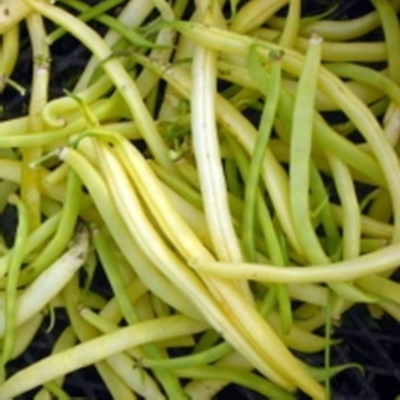 Mid-season (90-100 days from germination) open-pollinated variety. The plant grows 50-70cm tall with light yellow pods, 9-12cm long with 4-6 white seeds. Use cooked or dry.
Mid-season (90-100 days from germination) open-pollinated variety. The plant grows 50-70cm tall with light yellow pods, 9-12cm long with 4-6 white seeds. Use cooked or dry. -
Out of stock
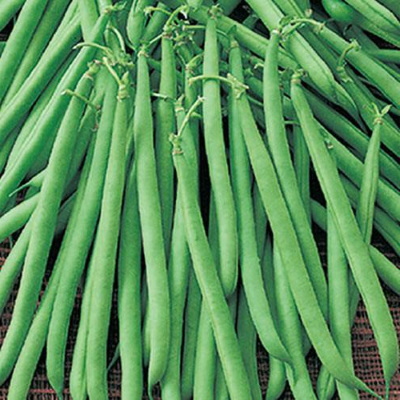 Maxibel is unsurpassed in flavour and great for fresh market gardeners. Straight, dark-green filet bean pods are stringless and about 18cm long on sturdy bush plants. Maxibel Filet bush bean seeds produce plants that yield in a huge but concentrated harvest. This is an excellent choice for multiple spring sowings – stagger planting times and sow short rows every two to three weeks. This will result in a much longer harvest window. Try growing Maxibel bush beans in larger containers like half barrels or grow bags. They work very well in raised beds, too.
Maxibel is unsurpassed in flavour and great for fresh market gardeners. Straight, dark-green filet bean pods are stringless and about 18cm long on sturdy bush plants. Maxibel Filet bush bean seeds produce plants that yield in a huge but concentrated harvest. This is an excellent choice for multiple spring sowings – stagger planting times and sow short rows every two to three weeks. This will result in a much longer harvest window. Try growing Maxibel bush beans in larger containers like half barrels or grow bags. They work very well in raised beds, too. -
Out of stock
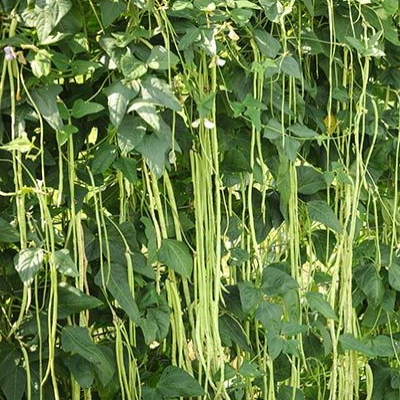 Start by sowing the seeds one to two inches deep, with a space of three to four inches between plants. The use of a low tunnel for the first month of growing (Until June 20th) will help in the production of these lovely tender beans. The Yard Long can tolerate acidic soils and will require full sun. Water them often so that they don’t wilt in the sun. Due to the nature of a vine, support, such as a trellis, will be needed. Pods grow long and slightly heavy, so they will need strong support. The pods take two to three months to reach maturity, at which point they should be anywhere from 25-80 cm long. you will want to start picking them when they are 20-25 cm long. Once pods begin to reach this size, they should be harvested each day to encourage production on the vine.
Start by sowing the seeds one to two inches deep, with a space of three to four inches between plants. The use of a low tunnel for the first month of growing (Until June 20th) will help in the production of these lovely tender beans. The Yard Long can tolerate acidic soils and will require full sun. Water them often so that they don’t wilt in the sun. Due to the nature of a vine, support, such as a trellis, will be needed. Pods grow long and slightly heavy, so they will need strong support. The pods take two to three months to reach maturity, at which point they should be anywhere from 25-80 cm long. you will want to start picking them when they are 20-25 cm long. Once pods begin to reach this size, they should be harvested each day to encourage production on the vine. -
Out of stock
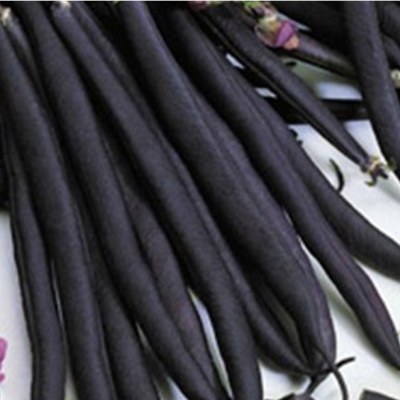 Early variety (55-65 days). Bush growth up to 25-40 cm high. One plant gives 14-16 violet, 12-14 cm long pots with an excellent taste. Good resistance to all common diseases. The colour of the beans turns green when cooked.
Early variety (55-65 days). Bush growth up to 25-40 cm high. One plant gives 14-16 violet, 12-14 cm long pots with an excellent taste. Good resistance to all common diseases. The colour of the beans turns green when cooked. -
Out of stock
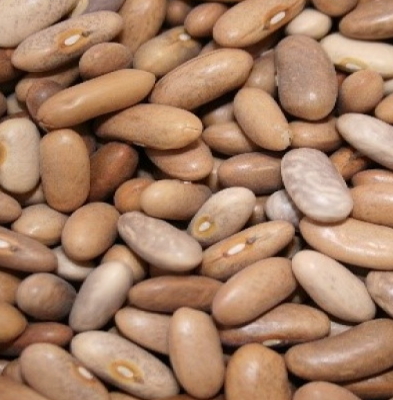
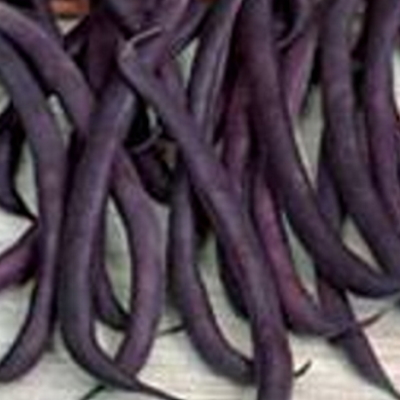 Royal Burgundy produces an unusual dark purple podded bean, though pods turn dark green when cooked. Enjoy an abundant yield of tender and delicious stringless beans. These beans are excellent when used either fresh or frozen. Tip: pick beans when they are about 10 cm long. Can be steamed, sauteed, baked, or used in recipes in place of French Green Beans.
Royal Burgundy produces an unusual dark purple podded bean, though pods turn dark green when cooked. Enjoy an abundant yield of tender and delicious stringless beans. These beans are excellent when used either fresh or frozen. Tip: pick beans when they are about 10 cm long. Can be steamed, sauteed, baked, or used in recipes in place of French Green Beans. -
Out of stock
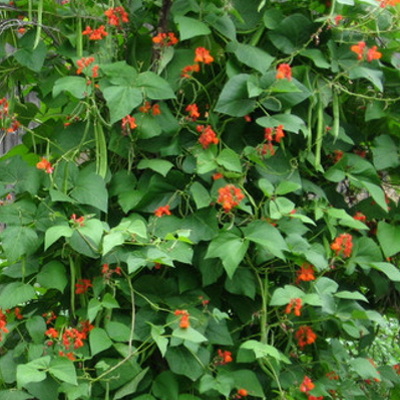 These seeds can be sown indoors by placing them two inches deep in potted soil, and transplanted outside after seven to ten weeks, when the threat of frost has passed. Conversely, you may sow them directly outdoors by placing them 5 cm deep in the soil, 22-25 inches apart, and with 45 cm between rows. Because these seeds will grow in a vine, they will need a support trellis, such as a cane or frame. It is best for the roots to put your frame in place when you plant as these vines grow quickly. Regular watering is required, and these vines will grow to impressive lengths in a relatively brief period of time. 3-4 Meter vines are covered in attractive red blossoms borne in clusters. The more you pick, the more they produce. Most should bear pods from late July and harvest can continue until the first frosts, or longer if plants are protected. Beans are at their best when fresh, young, and tender. They should be harvested when the pods are thin, snap easily, and while the seeds are still small and pale in colour. Picking green beans often help to promote more growth and increase yields. As the pods get older they develop string and the pod-walls become more fibrous, with pronounced bumps on the surface indicating that the seeds are enlarging and that moisture is going into the seed from the pod.
These seeds can be sown indoors by placing them two inches deep in potted soil, and transplanted outside after seven to ten weeks, when the threat of frost has passed. Conversely, you may sow them directly outdoors by placing them 5 cm deep in the soil, 22-25 inches apart, and with 45 cm between rows. Because these seeds will grow in a vine, they will need a support trellis, such as a cane or frame. It is best for the roots to put your frame in place when you plant as these vines grow quickly. Regular watering is required, and these vines will grow to impressive lengths in a relatively brief period of time. 3-4 Meter vines are covered in attractive red blossoms borne in clusters. The more you pick, the more they produce. Most should bear pods from late July and harvest can continue until the first frosts, or longer if plants are protected. Beans are at their best when fresh, young, and tender. They should be harvested when the pods are thin, snap easily, and while the seeds are still small and pale in colour. Picking green beans often help to promote more growth and increase yields. As the pods get older they develop string and the pod-walls become more fibrous, with pronounced bumps on the surface indicating that the seeds are enlarging and that moisture is going into the seed from the pod. -
Out of stock
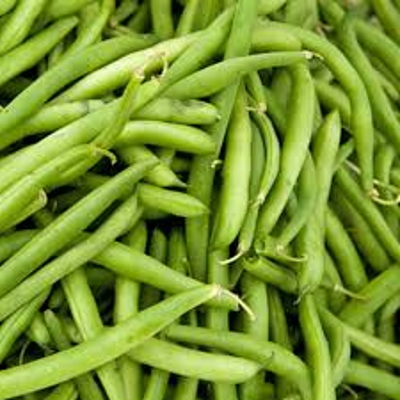 The tendergreen variety of bean produces abundant yields of 12-18 cm pods. Tendergreens are resistant to common bean mosaic. This is a bush type bean plant, so it can grow independent of a pole or support. This plant is best suited for a more advanced gardener, as the window for harvesting is rather short, about two weeks. It is beneficial to sow a few different plants about ten days apart. These plants pay off well, with tender and delicious green pods with a mild and delicious taste. This is a great main crop variety for gardeners who enjoy freezing and canning.
The tendergreen variety of bean produces abundant yields of 12-18 cm pods. Tendergreens are resistant to common bean mosaic. This is a bush type bean plant, so it can grow independent of a pole or support. This plant is best suited for a more advanced gardener, as the window for harvesting is rather short, about two weeks. It is beneficial to sow a few different plants about ten days apart. These plants pay off well, with tender and delicious green pods with a mild and delicious taste. This is a great main crop variety for gardeners who enjoy freezing and canning. -
Out of stock
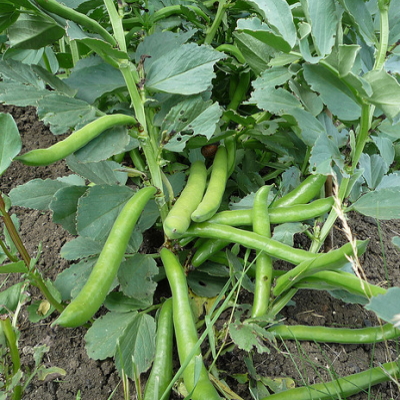 The best bean to try in 2021. Unlike most beans, fava beans prefer cool weather and are best planted in early spring as soon as the soil can be worked. Sow 2.5 cm deep, 10-12 cm apart, in rows 40-90 cm apart or use wide-bed style planting, giving each plant 25 sq.cm of space. Vroma produces large, 15-18 cm pods with 4–5 large seeds. Cook like a shell bean when the seeds are pale green or wait until pods are dry for shelled beans. Strong, heat-tolerant plants resist lodging. Light brown seeds. These lovely plants reach 1-1.5 M high and are self-supporting.
The best bean to try in 2021. Unlike most beans, fava beans prefer cool weather and are best planted in early spring as soon as the soil can be worked. Sow 2.5 cm deep, 10-12 cm apart, in rows 40-90 cm apart or use wide-bed style planting, giving each plant 25 sq.cm of space. Vroma produces large, 15-18 cm pods with 4–5 large seeds. Cook like a shell bean when the seeds are pale green or wait until pods are dry for shelled beans. Strong, heat-tolerant plants resist lodging. Light brown seeds. These lovely plants reach 1-1.5 M high and are self-supporting. -
Out of stock
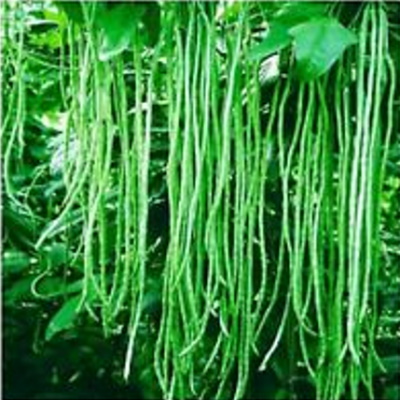 This is a weaving bean crop, the bush of which reaches 2 m in height and bears fruit with very long asparagus bean pods, the length of which is from 40 to 50 cm. The plant develops very quickly, and the fruits can be used like ordinary asparagus beans (for cooking first courses, scrambled eggs, and stewed vegetable goodies). At the same time, the plant, like all legumes, easily tolerates irregular watering and even drought.
This is a weaving bean crop, the bush of which reaches 2 m in height and bears fruit with very long asparagus bean pods, the length of which is from 40 to 50 cm. The plant develops very quickly, and the fruits can be used like ordinary asparagus beans (for cooking first courses, scrambled eggs, and stewed vegetable goodies). At the same time, the plant, like all legumes, easily tolerates irregular watering and even drought. -
Out of stock
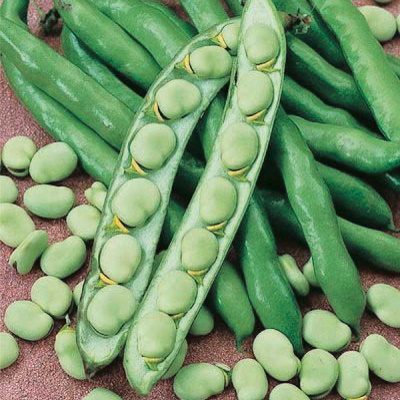 Heritage variety-Broad Windsor beans are prolific yielders. Plants produce long 15-20 cm pods with 4-6 large, flat beans inside. This variety is also tolerant of frost and has fragrant flowers. Sow seeds when the soil is warm and all danger of frost is past. Pick early and often to encourage production. Pick when plump and cook like peas or lima beans. This large variety will fix nitrogen in your soil, so it’s perfect for planting in the fall, harvesting in the spring, and following with nitrogen-loving crops like Brassicas, lettuce, or spinach. Fresh or dried, broad beans must be cooked before eating in order to rid them of potentially toxic alkaloids. The young, tender leaves can be eaten raw, or cooked like spinach. Broad beans are one of the world’s most ancient and widespread food crops.
Heritage variety-Broad Windsor beans are prolific yielders. Plants produce long 15-20 cm pods with 4-6 large, flat beans inside. This variety is also tolerant of frost and has fragrant flowers. Sow seeds when the soil is warm and all danger of frost is past. Pick early and often to encourage production. Pick when plump and cook like peas or lima beans. This large variety will fix nitrogen in your soil, so it’s perfect for planting in the fall, harvesting in the spring, and following with nitrogen-loving crops like Brassicas, lettuce, or spinach. Fresh or dried, broad beans must be cooked before eating in order to rid them of potentially toxic alkaloids. The young, tender leaves can be eaten raw, or cooked like spinach. Broad beans are one of the world’s most ancient and widespread food crops.